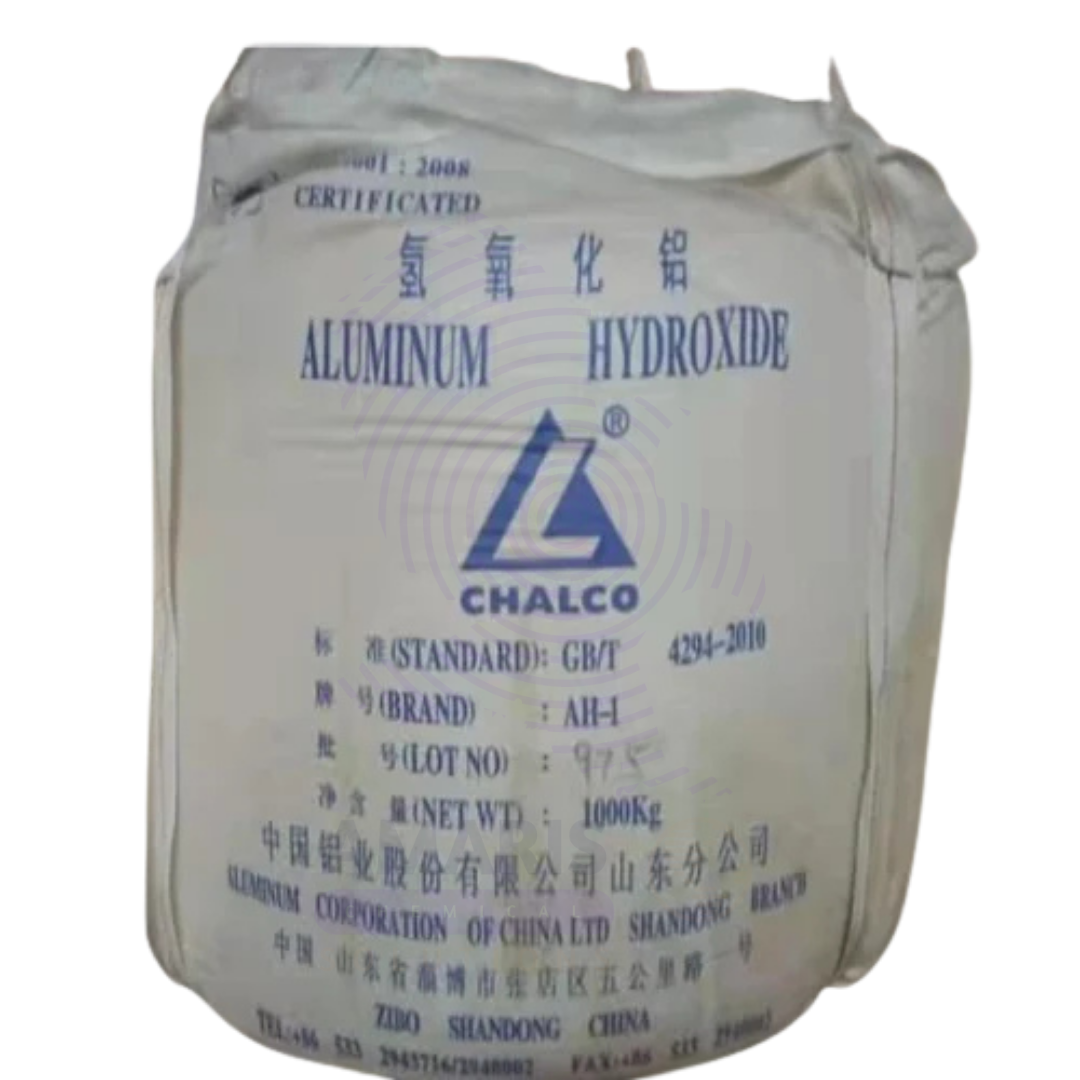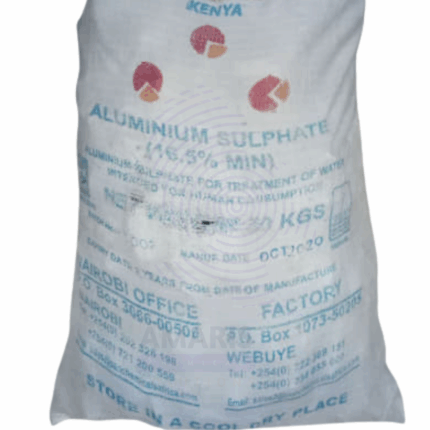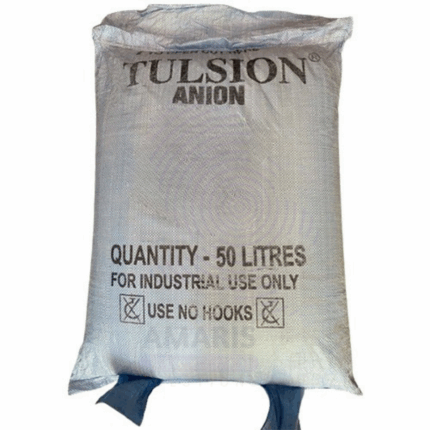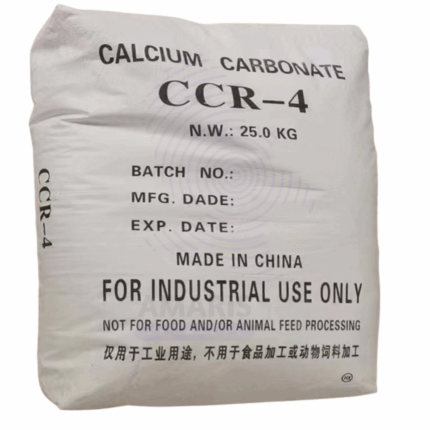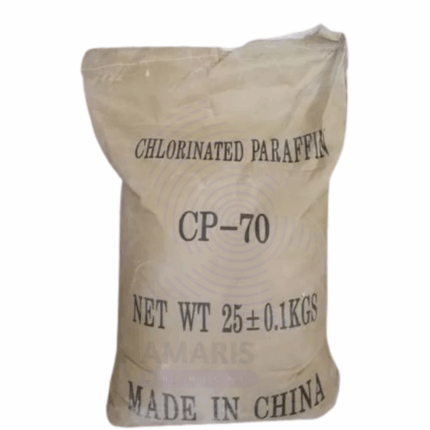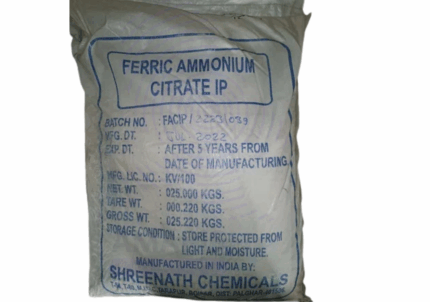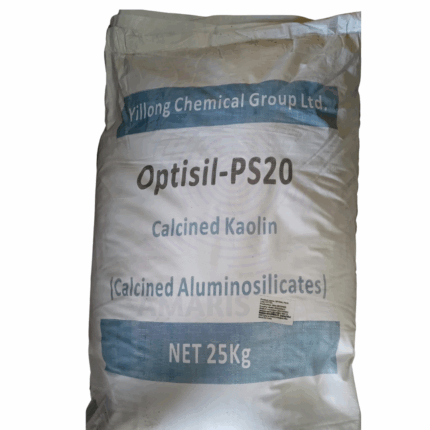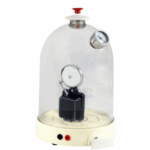
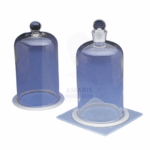
Aluminum hydroxide
$ 1.89 Original price was: $ 1.89.$ 1.78Current price is: $ 1.78.
Aluminum Hydroxide, chemically known as Al(OH)₃, is a white, odorless, and odorless powder or gelatinous substance. It is widely used in pharmaceuticals as an antacid to neutralize stomach acid and relieve indigestion and heartburn. Beyond healthcare, aluminum hydroxide is a crucial component in water purification, fire retardants, and as a precursor or filler in various industrial applications. It functions as a flame retardant by releasing water upon heating, thus cooling the material and diluting flammable gases. Due to its amphoteric nature, it can react both as an acid and base, enhancing its versatility. Aluminum hydroxide is often utilized in manufacturing aluminum salts and in producing aluminum oxide.
Aluminum hydroxide
Primary Uses
- Pharmaceuticals
- Used as an active ingredient in antacids to treat acid indigestion, heartburn, and gastric ulcers by neutralizing excess stomach acid.
- Functions as a vaccine adjuvant in some immunizations, boosting the immune response.
- Water Treatment
- Used as a flocculant and coagulant aid in water purification to remove impurities and suspended solids.
- Helps in clarifying wastewater and industrial effluents.
- Fire Retardants
- Incorporated into plastics, rubber, and coatings as a flame retardant additive; decomposes endothermically releasing water, which cools surfaces and suppresses flames.
- Used in textiles and building materials to enhance fire resistance.
- Industrial Manufacturing
- Used as a filler in plastics, paper, rubber, and ceramics to improve product strength and durability.
- Precursor for producing alumina (Al₂O₃) and other aluminum compounds.
Secondary Uses
- Cosmetics & Personal Care
- Used in deodorants and antiperspirants as an active ingredient to reduce sweating.
- Acts as an abrasive and opacifying agent in some formulations.
- Catalysts
- Utilized as a catalyst or catalyst support in chemical reactions, including in petrochemical processes.
- Paints & Coatings
- Added to paints to improve durability and resistance to moisture and heat.
- Agriculture
- Used in soil conditioning and as a carrier for pesticides.
1. Basic Identification Attributes
- Chemical Name (IUPAC): Aluminum hydroxide
- Common/Trade Names: Aluminum hydroxide, hydrated alumina, alumina trihydrate
- CAS Number: 21645-51-2
- HS Code: 2818.10.00
- Molecular Formula: Al(OH)₃
- Synonyms: Hydrated aluminum oxide, alumina trihydrate (ATH)
2. Physical & Chemical Properties
- Physical State: White powder or gelatinous solid
- Color & Odor: White, odorless
- Melting Point: Decomposes at ~300°C (loses water, forms Al₂O₃)
- Boiling Point: N/A (decomposes before boiling)
- Density: ~2.42 g/cm³ (bulk density varies with form)
- Solubility: Insoluble in water; soluble in strong acids and alkalis
- pH Level: Amphoteric; typically slightly basic (~8.5 in water)
- Vapor Pressure: Negligible
- Flash Point: Non-flammable
- Autoignition Temperature: N/A
3. Safety & Hazard Attributes
- Hazard Class (GHS): Not classified as hazardous; generally regarded as safe (GRAS)
- NFPA Ratings: Health 1, Flammability 0, Reactivity 0
- Exposure Limits: OSHA PEL = 15 mg/m³ (total dust), ACGIH TLV = 10 mg/m³ (respirable dust)
- Reactivity: Stable under normal conditions; reacts with strong acids and bases
- Incompatibilities: Strong acids, alkalis, and reactive metals
4. Storage & Handling Attributes
- Storage Conditions: Store in a cool, dry, well-ventilated area; avoid moisture accumulation to prevent caking
- Container Type: Sealed plastic or metal containers with moisture barrier
- Shelf Life: Typically 2-3 years if stored properly
- Special Handling: Avoid dust generation; use appropriate PPE (dust masks, gloves, goggles)
5. Regulatory & Compliance Attributes
- Regulatory Status: Approved for pharmaceutical and food use in many countries
- Transportation: Not classified as hazardous for transport
- Waste Disposal: Dispose of in accordance with local environmental regulations
6. Environmental & Health Impact
- Ecotoxicity: Low toxicity to aquatic life; environmentally safe in typical use quantities
- Persistence: Stable, not readily biodegradable but non-toxic
- Carcinogenicity: Not classified as carcinogenic by IARC or OSHA
- Biodegradability: Inorganic compound, not biodegradable
Safety Handling Precautions
- PPE: Use gloves, dust masks, and eye protection to prevent irritation from dust.
- Handling: Minimize dust formation; handle in well-ventilated areas.
- Storage: Keep containers tightly closed and away from moisture and incompatible substances.
- Hygiene: Wash hands thoroughly after handling; avoid ingestion and inhalation.
First Aid Measures
- Inhalation: Move to fresh air; seek medical attention if coughing or respiratory discomfort persists.
- Skin Contact: Wash with soap and water; seek medical advice if irritation develops.
- Eye Contact: Rinse immediately with water for at least 15 minutes; consult a physician if irritation persists.
- Ingestion: Rinse mouth with water; seek medical attention if large quantities are ingested.
Firefighting Measures
- Fire Hazards: Aluminum hydroxide is non-flammable and does not support combustion.
- Extinguishing Media: Use water spray, foam, dry chemical, or CO₂ for surrounding fires.
- Special Precautions: No special precautions needed for firefighting related to this material.
- Firefighters: Use standard protective equipment.


 Preservatives(food)
Preservatives(food) Flavor Enhancers
Flavor Enhancers Acidulants
Acidulants Sweeteners
Sweeteners Antioxidants
Antioxidants Colorants(food)
Colorants(food) Nutraceutical Ingredients (food)
Nutraceutical Ingredients (food) Nutrient Supplements
Nutrient Supplements Emulsifiers
Emulsifiers
 Collectors
Collectors Dust Suppressants
Dust Suppressants Explosives and Blasting Agents
Explosives and Blasting Agents Flocculants and Coagulants
Flocculants and Coagulants Frothers
Frothers Leaching Agents
Leaching Agents pH Modifiers
pH Modifiers Precious Metal Extraction Agents
Precious Metal Extraction Agents
 Antioxidants(plastic)
Antioxidants(plastic) Colorants (Pigments, Dyes)
Colorants (Pigments, Dyes) Fillers and Reinforcements
Fillers and Reinforcements Flame Retardants
Flame Retardants Monomers
Monomers Plasticizers
Plasticizers Polymerization Initiators
Polymerization Initiators Stabilizers (UV, Heat)
Stabilizers (UV, Heat)
 Antifoaming Agents
Antifoaming Agents Chelating Agents
Chelating Agents Coagulants and Flocculants
Coagulants and Flocculants Corrosion Inhibitors
Corrosion Inhibitors Disinfectants and Biocides
Disinfectants and Biocides Oxidizing Agents
Oxidizing Agents pH Adjusters
pH Adjusters Scale Inhibitors( water)
Scale Inhibitors( water)
 Antioxidants(cosmetic)
Antioxidants(cosmetic) Emollients
Emollients Fragrances and Essential Oils
Fragrances and Essential Oils Humectants
Humectants Preservatives
Preservatives Surfactants(cosmetic)
Surfactants(cosmetic) Thickeners
Thickeners UV Filters
UV Filters
 Fertilizers
Fertilizers Soil Conditioners
Soil Conditioners Plant Growth Regulators
Plant Growth Regulators Animal Feed Additives
Animal Feed Additives Biostimulants
Biostimulants Pesticides (Herbicides, Insecticides, Fungicides)
Pesticides (Herbicides, Insecticides, Fungicides)
 Active Pharmaceutical Ingredients (APIs)
Active Pharmaceutical Ingredients (APIs) Excipients
Excipients Solvents(pharmaceutical)
Solvents(pharmaceutical) Antibiotics
Antibiotics Antiseptics and Disinfectants
Antiseptics and Disinfectants Vaccine Adjuvants
Vaccine Adjuvants Nutraceutical Ingredients (pharmaceutical)
Nutraceutical Ingredients (pharmaceutical) Analgesics & Antipyretics
Analgesics & Antipyretics
 Analytical Reagents
Analytical Reagents Solvents(lab)
Solvents(lab) Chromatography Chemicals
Chromatography Chemicals Spectroscopy Reagents
Spectroscopy Reagents microbiology-and-cell-culture-reagents
microbiology-and-cell-culture-reagents Molecular Biology Reagents
Molecular Biology Reagents Biochemical Reagents
Biochemical Reagents Inorganic and Organic Standards
Inorganic and Organic Standards Laboratory Safety Chemicals
Laboratory Safety Chemicals Specialty Laboratory Chemicals(Special Laboratory Equipment)
Specialty Laboratory Chemicals(Special Laboratory Equipment)
 Demulsifiers
Demulsifiers Hydraulic Fracturing Fluids
Hydraulic Fracturing Fluids Scale Inhibitors(oil)
Scale Inhibitors(oil) Surfactants(oil)
Surfactants(oil) Drilling Fluids
Drilling Fluids
 Dyes and Pigments
Dyes and Pigments Bleaching Agents
Bleaching Agents Softening Agents
Softening Agents Finishing Agents
Finishing Agents Antistatic Agents
Antistatic Agents
 Admixtures
Admixtures Waterproofing Agents
Waterproofing Agents Sealants and Adhesives
Sealants and Adhesives Curing Compounds
Curing Compounds Concrete Repair Chemicals
Concrete Repair Chemicals Anti-Corrosion Coatings
Anti-Corrosion Coatings
 Surfactants(cleaning)
Surfactants(cleaning) Builders
Builders Enzymes
Enzymes Solvents (Cleaning)
Solvents (Cleaning) Fragrances
Fragrances
 Electronic Chemicals
Electronic Chemicals Catalysts
Catalysts Lubricants
Lubricants Photographic Chemicals
Photographic Chemicals Refrigerants
Refrigerants Automotive chemicals
Automotive chemicals Pyrotechnic Chemicals
Pyrotechnic Chemicals
 Biodegradable Surfactants
Biodegradable Surfactants Bio-based Solvents
Bio-based Solvents Renewable Polymers
Renewable Polymers Carbon Capture Chemicals
Carbon Capture Chemicals Wastewater Treatment Chemicals
Wastewater Treatment Chemicals
 Pigments
Pigments Solvents(paint)
Solvents(paint) Specialty Coatings
Specialty Coatings Binders/Resins
Binders/Resins Additives
Additives Driers
Driers Anti-Corrosion Agents
Anti-Corrosion Agents Functional Coatings
Functional Coatings Application-Specific Coatings
Application-Specific Coatings
 Fresh Herbs
Fresh Herbs Ground Spices
Ground Spices Whole Spices
Whole Spices Spice Blends
Spice Blends Dried Herbs
Dried Herbs
 Leavening Agents
Leavening Agents Dough Conditioners
Dough Conditioners Flour Treatments
Flour Treatments Fat Replacers
Fat Replacers Decoratives
Decoratives Preservatives(baking)
Preservatives(baking)
 Plasticizers & Softeners
Plasticizers & Softeners Reinforcing Agents
Reinforcing Agents Adhesion Promoters
Adhesion Promoters Vulcanizing Agents
Vulcanizing Agents Antidegradants
Antidegradants Blowing Agents
Blowing Agents Fillers & Extenders
Fillers & Extenders Accelerators & Retarders
Accelerators & Retarders